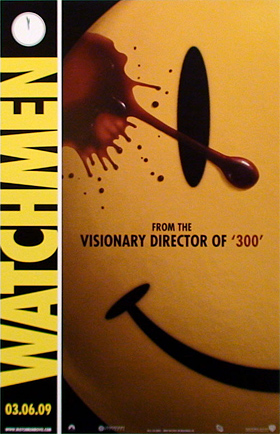
Rating: B+
The 1999 film, The Boondock Saints, directed by Troy Duffy is an action-packed tale of orphaned twin Irish brothers (Sean Patrick Flannery and Norman Reedus) who take it upon themselves to rid the world of sin. However, the brothers get the attention of the FBI, specifically agent Paul Smecker (Willem Dafoe), when they start killing off the Russian mob in their hometown of Boston. The film takes a journey from the twins’ revelation of becoming the proverbial hand of God to finding out who their father actually is and what he is good at doing.
The brothers are joined by a friend named Rocco, played by David Della Rocco, who serves as the source of comedic relief among the massive amounts of bullets that are constantly whizzing around. The characters seem to be on the edge of insanity throughout the entire film, one of which probably breaks that barrier. Agent Smecker goes beyond his duties as an agent to see the good in what the brothers are doing but in the midst of his epiphany he goes into a fit of hysteria. Dafoe plays the part so well, it’s scary. Dafoe is well known for bringing bad guys to life and shoving the character in your face to scare the hell out of you. By far, Dafoe does the best job in terms of acting within this film but he’s not the only good actor that we see.
Norman Reedus also does a great job playing his role as a vigilante justice seeker. Every time he gets mad, you feel it. Every time he says his prayer, you feel like he’s executing you. I love the way the story plays out. I’ve seen the movie many times now but it is still hard to believe some of the things that happen. Duffy does a great job in telling his story although he could leave out some of the Bostonian cussing which runs ramped throughout the entire film. I like the idea that these two are taking it upon themselves to get rid of everything that’s wrong with the world.
The cinematography is interesting in that there are many scenes in which Smecker visualizes himself being in the same room as the brothers while trying to figure out what is going on. There are a lot of interesting shots that are tried and succeed in making the action more intense or the emotions more potent. These scenes are accented by the music which seems to be chosen in order to make everything about the film more awesome. The wardrobe department did a good job in gauging what was appropriate for a person engaging in activity that lies outside of the law. Sunglasses and trench coats always add to glamorizing handguns even if the ones holding the guns can speak multiple languages and have tattoos on their hands that say “truth” and “justice” in Latin.
As incredibly awesome as this film is, there are a few drawbacks. First of all, not all of the actors were as good as Reedus and Dafoe. The majority of the actors playing various roles in the Russian mob seem to be trying too hard to be bad. None of them seem to draw in kind of emotional response from me, except for maybe annoyed. Also, the film does seem to go a little overboard in making out what the brothers are doing seem great. They are killing people left and right and at the same time making jokes about television shows from days gone by, but we have to realize that when you are surrounded by dead bodies telling jokes may not be an appropriate response. But then again, when the mob has problems with others and their response is extremely gratuitous violence, that isn’t appropriate either.
Duffy’s film is great for making people think about how the violence of the world should be dealt with. It floats along the same lines of revenge as say The Punisher and Kill Bill, but does so with a light-hearted air that makes you wonder if there are some psychiatric issues brewing in the mind of Troy Duffy. These factors, combined with the fact that the film did not make much of a splash when it made its debut, come together to make The Boondock Saints a film that will be remembered as a cult classic.



